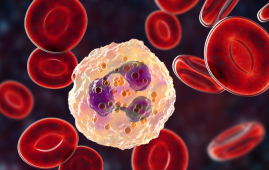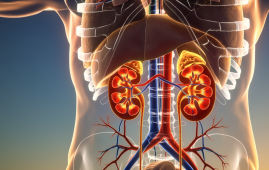

With nearly 87,000 participants, the world’s largest study on light exposure and its impact on mental health discovered that higher exposure to light at night increases a person’s risk for psychiatric disorders such as anxiety, bipolar disorder, and PTSD severity, as well as self-harm.
The study also discovered that increased exposure to daylight light can work as a non-pharmacological approach of lowering the risk of psychosis.
Those exposed to high levels of light at night raised their risk of depression by 30%, whereas those exposed to high levels of light during the day lowered their risk of depression by 20%. Similar patterns of outcomes were observed for self-harm behavior, psychosis, bipolar disorder, GAD, and PTSD.
These findings suggest that avoiding light at night and seeking greater light during the day could be an effective, non-pharmacological way of lowering major mental health disorders.
Associate Professor Sean Cain of the Monash School of Psychological Sciences and the Turner Institute for Brain and Mental Health in Melbourne, Australia, conducted the research, which was published today in the journal Nature Mental Health.
“Our findings have the potential to have a huge societal impact,” Associate Professor Cain stated.
“Once people realize that their light exposure patterns have a significant impact on their mental health, they can take some simple steps to improve their well-being.” It’s about having strong light throughout the day and complete darkness at night.”
The 86,772 people in the study were drawn from the UK Biobank and were assessed for their exposure to light, sleep, physical activity, and mental health. According to Associate Professor Cain, the influence of night light exposure was likewise unaffected by demographics, physical activity, season, or employment.
“And our findings were consistent when accounting for shiftwork, sleep, urban versus rural living and cardio-metabolic health,” he went on to say.
Humans have actually turned our biological systems on their heads in modern, industrialised times. Our brains evolved to perform best with bright light during the day and nearly minimal light at night, according to Associate Professor Cain.
“Today, humans challenge this biology by spending roughly 90% of the day indoors under electric lighting that is too dim during the day and too bright at night compared to natural light and dark cycles.” “It’s confusing our bodies and making us sick,” he explained.
For more information visit – Monash University
more recommended stories
 Pelvic Floor Disorders: Treatable Yet Often Ignored
Pelvic Floor Disorders: Treatable Yet Often IgnoredKey Takeaways (Quick Summary) Pelvic floor.
 Urine-Based microRNA Aging Clock Predicts Biological Age
Urine-Based microRNA Aging Clock Predicts Biological AgeKey Takeaways (Quick Summary) Researchers developed.
 Circadian Control of Neutrophils in Myocardial Infarction
Circadian Control of Neutrophils in Myocardial InfarctionKey Takeaways for HCPs Neutrophil activity.
 E-Cigarette Use and Heart Attack Risk in Former Smokers
E-Cigarette Use and Heart Attack Risk in Former SmokersKey Takeaways for Clinicians and Nurses.
 Ultramarathon Physiology: What HCPs Should Know?
Ultramarathon Physiology: What HCPs Should Know?Ultramarathon Metabolism: What Happens to the.
 High-Intensity Training and Oxidative Stress Insights
High-Intensity Training and Oxidative Stress InsightsNew Evidence Linking High-Intensity Training and.
 Sterilized Fermented Beverage for Obesity: New Evidence
Sterilized Fermented Beverage for Obesity: New EvidenceEarly Insights Into a Sterilized Fermented.
 36-Week Pre-eclampsia Screening May Reduce Term Risk
36-Week Pre-eclampsia Screening May Reduce Term RiskA New Preventive Strategy for Term.
 Cardiovascular Risk and Sudden Cardiac Death in Diabetes
Cardiovascular Risk and Sudden Cardiac Death in DiabetesRising Sudden Cardiac Death (SCD) Risk.
 Poor Kidney Function and Alzheimer’s Biomarkers Explained
Poor Kidney Function and Alzheimer’s Biomarkers ExplainedPoor kidney function may influence levels.

Leave a Comment